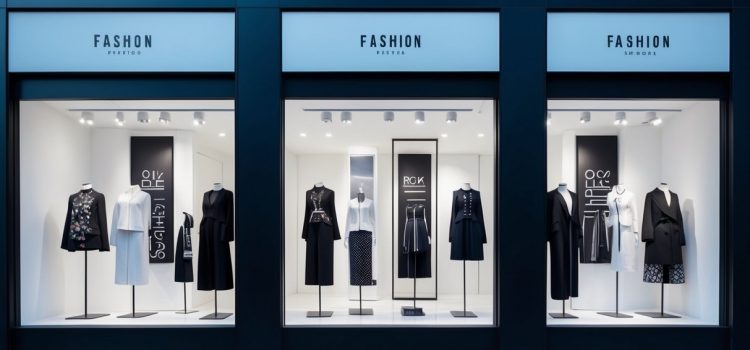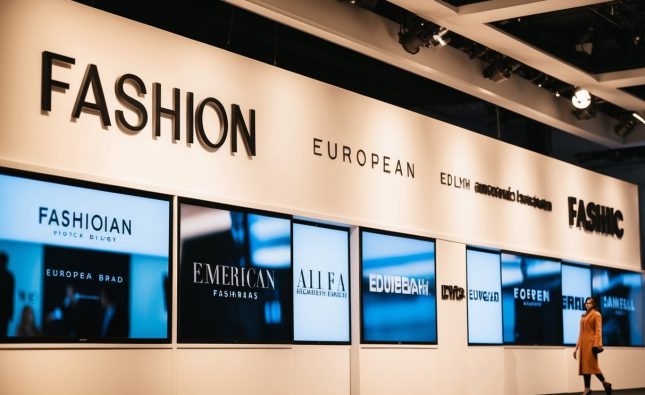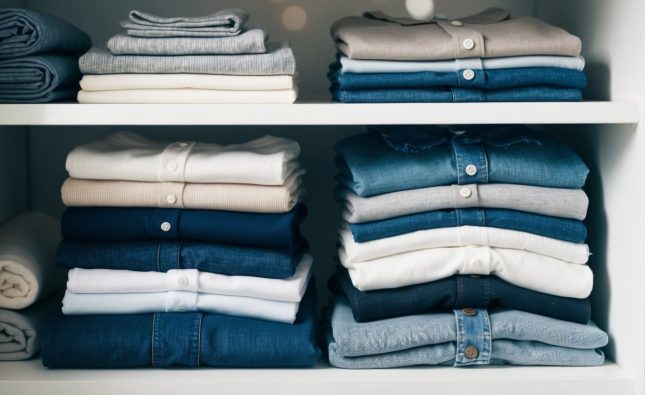
The fashion industry is constantly evolving, with new talent emerging each season. These emerging designer brands are reshaping trends and offering fresh perspectives that redefine style. As consumers increasingly seek unique and sustainable options, these brands capture attention by blending innovation with craftsmanship.

Several names are rising to prominence, each with a distinct vision that challenges the status quo. From casual streetwear to high-end couture, these designers are not just creating clothing, but cultivating identities and narratives that resonate with diverse audiences.
Exploring these emerging brands offers a glimpse into the future of fashion, where creativity knows no bounds and personal style takes center stage. Staying informed about these up-and-coming designers is essential for anyone interested in the constantly shifting landscape of fashion.
Defining the Emerging Designer Landscape

The landscape of emerging designers is characterized by a dynamic fusion of creativity and innovation. Key factors include the rise of independent labels, the influence of social media, and a growing emphasis on sustainability and ethical practices.
The Rise of Independent Labels
Independent labels have gained traction in the fashion industry. They often challenge traditional fashion norms and offer unique design perspectives. Many emerging designers prioritize artistic expression over commercial viability, leading to original and diverse collections.
Numerous independent brands are defined by their strong brand identities. These identities often resonate with niche markets, attracting consumers looking for distinct styles. Emerging designers are more likely to experiment with materials and silhouettes, fostering an inventive culture within the fashion sector.
The accessibility of production and online retail has empowered independent designers. They can now reach global audiences without the need for significant investment. This shift allows for a more inclusive environment for new voices in fashion.
Impact of Social Media on New Brands
Social media platforms have revolutionized how emerging designers connect with audiences. They provide opportunities for direct engagement, allowing designers to showcase their collections immediately. Platforms like Instagram and TikTok enable visual storytelling that captivates potential customers.
Emerging designers can cultivate communities around their brands through social media. This interaction fosters loyalty and encourages consumer participation, which is essential for brand growth. Influencer partnerships have also become crucial, amplifying visibility and reach.
Social media allows for rapid feedback from consumers. Designers can quickly gauge reactions and make adjustments to their offerings. This immediacy encourages innovation and adaptation in a competitive landscape.
Sustainability and Ethical Practices
Sustainability plays a pivotal role in the development of emerging designer brands. Many new labels prioritize environmentally friendly materials and processes, responding to consumer demand for ethical fashion.
Emerging designers often adopt transparency in their supply chains. This practice builds trust and aligns with the values of conscious consumers. Brands that emphasize ethical labor practices are increasingly appealing to buyers who value social responsibility.
The focus on sustainable production techniques can drive creativity. Designers experiment with upcycled materials and zero-waste patterns, pushing the boundaries of conventional fashion. This commitment to sustainability not only defines their identity but also shapes industry standards.
Key Markets for Emerging Designer Brands
The landscape for emerging designer brands is vibrant and diverse, with distinct markets that drive innovation and trends. Understanding these key areas is essential for recognizing future fashion leaders.
Europe’s Creative Hotspots
Europe remains a leader in fashion, with cities like Paris, Milan, and London at the forefront of emerging designer culture.
-
Paris serves as an incubator for fresh talent, offering numerous fashion weeks and trade shows. The emphasis on luxury and haute couture allows new designers to capture attention swiftly.
-
Milan is renowned for its strong manufacturing base and artisan craftsmanship. Emerging brands here often focus on blending traditional techniques with modern aesthetics, creating unique interpretations of luxury.
-
London’s eclectic scene fosters creativity and experimentation. Designers are encouraged to challenge norms and embrace inclusivity, making it an exciting platform for avant-garde styles.
North America’s Diverse Style Scene
North America’s fashion environment is marked by its eclecticism, appealing to various demographics and cultural influences.
-
New York remains a pivotal market, characterized by its fast-paced culture. Emerging designers often leverage the city’s fashion week platform to showcase innovative collections.
-
Los Angeles offers a casual, laid-back style reflecting the influence of pop culture and media. Brands here are focusing on sustainable practices and inclusivity, capturing the attention of environmentally conscious consumers.
-
Toronto is gaining recognition for its multicultural vibe. This city provides a fertile ground for diverse design perspectives, merging influences from around the globe.
Asia’s Growth in Contemporary Fashion
Asia is rapidly becoming a power player in the fashion industry, with cities like Tokyo, Shanghai, and Seoul leading the charge.
-
Tokyo is characterized by its avant-garde approach and unique street style. Emerging designers often experiment with bold designs and artistic concepts, making it a hub for cutting-edge fashion.
-
Shanghai shows a robust growth trajectory, with both local and international brands tapping into the Chinese consumer’s growing appetite for luxury.
-
Seoul’s fashion scene thrives on innovation and technology. It has established itself through festivals and trade shows, positioning new designers at the forefront of contemporary fashion trends.
Innovations in Design and Retail
Emerging designers are leveraging new technologies and materials to redefine fashion experiences. The incorporation of tech offers unique interactions, while innovative materials push the boundaries of sustainability and function.
Technology-Enhanced Experiences
Many designers integrate augmented reality (AR) and virtual reality (VR) into their marketing strategies. These technologies create immersive shopping experiences that engage consumers more deeply. For instance, brands are offering virtual try-ons through apps, allowing customers to visualize how garments fit without physically trying them on.
Additionally, some designers use AI to personalize shopping recommendations. By analyzing consumer behavior, AI systems tailor suggestions, enhancing the shopping experience. The outcome is a more efficient and satisfying journey for the consumer, combining creativity with cutting-edge technology.
Cutting-Edge Materials and Fabrication
Sustainability is a priority for many emerging brands, leading them to experiment with innovative materials. Designers are using biodegradable fabrics, like Tencel and organic cotton, which have lower environmental impacts. This shift promotes eco-friendliness in fashion production.
3D printing is also becoming prevalent, enabling designers to create intricate and bespoke pieces more efficiently. This technology reduces waste and allows for rapid prototyping. Additionally, advancements in smart textiles are transforming functionality, integrating features like temperature regulation and moisture-wicking directly into the fabric. These innovations are setting new standards for both design and retail in the fashion industry.
Emerging Designers to Watch in 2024
The fashion landscape is evolving, with new designers making significant waves in 2024. They push boundaries in various segments, from womenswear to unisex innovations, contributing to a more diverse and inclusive industry.
Brands Revolutionizing Womenswear
Several emerging brands are reshaping womenswear by focusing on sustainability and bold design. Diana Hsu utilizes eco-friendly materials, creating vibrant, statement pieces that resonate with environmentally conscious consumers. Her collections emphasize artistic prints and innovative cuts, appealing to a young audience.
Lina Olsson is another noteworthy name, known for her handmade garments that blend traditional craftsmanship with contemporary aesthetics. Her use of layering techniques and textured fabrics brings a unique quality to her work, making her a favorite among fashion-forward women seeking originality.
Menswear Mavens
In menswear, Kellan James is making an impact with his sharp tailoring and relaxed silhouettes. His collections focus on versatile pieces that transition seamlessly from casual to formal settings. Fabrics are carefully sourced, and sustainability is a core tenet of his brand philosophy.
Simon Lee stands out for integrating technology into fashion. Using smart textiles, his designs allow for functionality while maintaining a refined look. His work navigates the balance between modernity and tradition, attracting a clientele that appreciates innovation.
Unisex and Gender-Neutral Innovators
The demand for unisex fashion is on the rise, with brands like Eliot Rhys leading the charge. This designer offers collections that prioritize fluidity and inclusivity, allowing individuals to express themselves freely. The clothing features adaptable designs that challenge conventional gender norms.
Jordan Pierce champions comfort without sacrificing style. Their line includes relaxed fits and bold graphics, appealing to a diverse customer base. By embracing a minimalist approach, Pierce’s work echoes current trends while promoting a more accessible fashion narrative.












